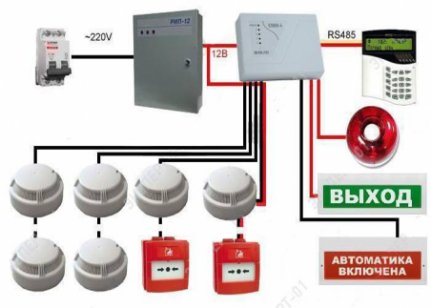Information for those who first encounter fire alarm.

What is a fire alarm?
The domestic regulatory framework is a strictly regulated list of buildings and structures that are to be equipped with an automatic fire alarm system. But the important understanding is that fire alarm systems are the salvation of people's lives and the minimization of material damage.
Fire alarm system is a complex of technical means intended for reliable and timely notification of the occurrence of a fire situation on the object. The warning functions include: detecting a fire or fire, processing and fixing primary information, forming one or more control signals, which are transmitted by the fire safety sensors to the central fire alarm console, as well as the system for automatic fire and smoke removal.
Fire alarm includes detection devices (sensors and detectors), as well as receiving and control panels that analyze the information coming from detectors and are occupied by the formation of control signals.
Fire alarm sensors differ in principle of the sensory element, the type of controlled environmental parameters (concentration of carbon monoxide, degree of smoke or ionization, temperature) and the way of transmitting information about the operation to the control panel. Along with the automatic sensors on the object set manual detectors (emergency buttons for fire alarm), enable the use of "human factor" in the timely detection of ignition.
Fire alarm systems are divided into non-addressable, address and address-analog based on the degree of accuracy of signaling from sensors.
Application of non-radio systems is advisable for small objects. In this case, the sensors have a fixed threshold of sensitivity and are combined by a common loop into one or more groups. In case of operation of one of the sensors a general alarm is generated. In this case, it is possible to set the source of operation only to the accuracy of the loop number.
In address systems, in the communication link between the sensor and the control panel, an information exchange protocol is transmitted to the panel, not only the trigger signal, but also the sensor number, which allows more precise localization of the source of ignition.
In address-analog systems, sensors are occupied only by the transmission of telemetric information about their presence and controlled parameters to the central control panel, which, based on the totality of data received by itself, generates an alarm. Such systems allow for flexible adaptation to the conditions on the object.


 Glyanec
Glyanec